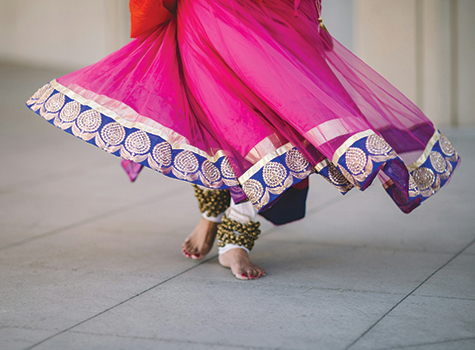
I feel very fortunate and blessed to have been introduced to the classical Indian arts and classical Indian music is some of the deepest music I have encountered. There are vast philosophies and yearnings tied to a song and dance repertoire. There is a complexity to the classical Indian arts that I feel takes exposure, time and understanding to appreciate.
Live concerts for me can be a very emotional experience. The mridangam drum brings out the longings of the heart, the violin threads in the listener to its vibrations, the flute lures to the land of the enchanter, and the vocalist sings the emotions that are unknowingly buried deep within us.
On July 1, 2024, one of the dance performances that I had attended was for a show called Natya Aaradhana from the Gurukrupa School of Dance. A solo performance was performed on a song called “Viladhyu Idhu Nerama.â€
While in the audience, when I heard the song was to be performed, I felt my heart skip a beat. The song is in Tamil and the title translates “Is this the time to play.†I knew this would be moving for me to listen to.
The song is beseeching to Lord Muruga or Kartikeyan. The seeker is suffering and wishes to see the Lord. But the Lord Muruga, seemingly so teasing, keeps playing as we ache.
How much can that sentiment resonate in one’s daily life? For instance, what sufferings do we face that we feel tired, and we need reprieve?
When we yearn, and somehow our efforts seem so challenging and insurmountable, how much can we keep getting back on the proverbial horse? How many times do we have to go through lessons that we seem to be repeating?
Then when we look at the news, along with national and global events, there seems to be no end to suffering.
There is climate change. There will be more destructive storms. Every year there seems to be records being broken with regards to heat or regards to hurricanes or floodings. The poor will be most impacted by the more extreme weather conditions.
There has been disturbing news about more illnesses that are to come. As societies are cutting down natural landscapes for urbanization, there is more risk for exposure to diseases that can impact humans.
There are those having trouble paying healthcare bills. Healthcare seems more now as “Health business†than Healthcare. We are in a time where magnificent strides are being made via various therapies, yet there are people who may never be able to afford or have access to those.
And of course, we see much conflict and strife in the world. We are shown images from around the world of mass misery and distress.
Thus, the emotion of “is this time to play†comes in.
The dancer depicts the beautiful peacock of Lord Muruga, which is a stark contrast to the sorrowfulness in the composition.
How can Lord Muruga play and dance under these circumstances? Where is the compassion of the Lord?
Similar questions are embedded in different stories in Sanatana Dharma. For instance, in the Ramayana, why is Rama the way he is?
From Mahabharata, why is there war? The epic goes through the various characters’ egos, hubris, and flaws. Why did Yudhistir roll the dice? Was he not the epitome of righteousness? Is there a way to avoid conflict and war? Who are brothers? Are they five? Are they six? Can it include a brother who is Hanuman?
Who are family? Which side is right? Who is wrong? What would we have done if we were in their positions? Of course, we would have done the right thing and that is we would have avoided all conflict. Been very understanding.
Or so we say.
But here we all are. Many are still on this Wheel of Action.
Lord Muruga continues to play. Is this a time for playing?
There are so many questions. We wish to know so much, yet the more we want to know, the more there is to know.
In a beautiful story, Lord Brahma was teaching Sage Narada, and he told him that even he, who is an expert in spiritual knowledge, cannot fully comprehend the divine.
We are human, and it is okay to not have all the answers. Sometimes, the best thing that we can do in these times is sing to the Lord until we are filled with devotion.
The Indian Classical Arts is a great medium for this practice as well as for the Rasika to be immersed in this.
This series of articles is about the journey and unique insights of an adult dance student learning classical Indian dance and the experiences and perspective of taking classical Indian dance as both an American and an Indian.
Preethi Sriram is a classical dance enthusiast and lifelong learner of dance. Contact: [email protected]



